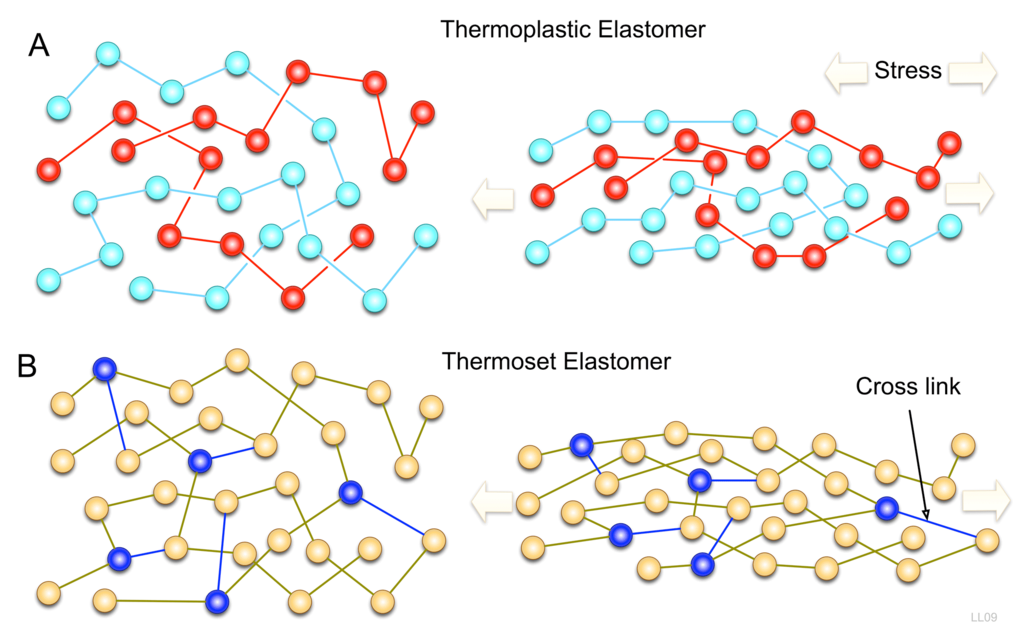When it comes to choosing the right plastic for your product, there are an overwhelming number of options. The first thing you need to narrow down is this: thermoset or thermoplastic? Your decision will be largely based on your product's specifications and final application. Let's examine the differences between the two, the pros and cons of each, and real-life applications.
Thermoset vs. Thermoplastic
The Curing Process
Thermoset resins (liquids or partially polymerized powders) are cured through a catalytic chemical reaction that cross-links polymers to form an irreversible chemical bond. Once the cross-links are formed, the product cannot be reshaped or remolded
Heat is applied to thermoplastic polymers (solid pellets) to soften them. No chemical bonding occurs. The curing process is reversible. Thus, thermoplastics can be reshaped or remolded without compromising the plastic's physical properties.

Photo source: differencebetween.com
The Good
Thermoset
-
- Resistant to high temps
- Cost-effective
- Structural integrity
- Chemical resistance
- Flexible and elastic qualities
- Superior finishing (painting, polishing)
- Easy to add reinforcing fibers
Thermoplastic
-
- 100% recyclable
- High-impact resistance
- Can reshape or reform
- Chemical resistance
- Eco-friendly manufacturing
- Additives for color and other traits
- Hard crystalline or rubbery surface options
The Not So Good
Thermoset
-
- Cannot recycle
- Cannot reshape or reform
- Chars under high heat
- Short workable pot life
Thermoplastic
-
- Generally more expensive
- More difficult to prototype
- Melts when heated
- Harder to add reinforcing fibers
Examples and Applications
Examples of thermoset include phenolic resin, polyurethane, epoxy resin, silicone resin, polyster resin and melamine. This can be used in products like electronics, appliances, HVAC parts and silicone bakeware.,
Thermoplastic examples include PET, PBT, PEI, PVC, polypropylene, nylon, PE, polycarbonate, vinyl and PS. Its applications can include items like toys, water bottles, PVC pipes or car grills.





.jpg?width=176&height=56&name=MR_associatedNetwork_logo%20(1).jpg)